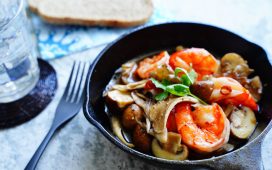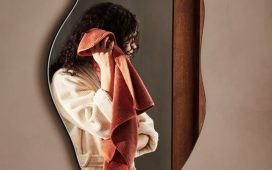As the chef and co-owner of the pioneering Hudson Valley farm-to-table restaurant Blue Hill at Stone Barns, Dan Barber is besieged by artisans trying to collaborate with him. But one day, in the spring of 2015, he heard from a Pennsylvania ceramist named Gregg Moore and instantly knew that this call was different. “He started talking to me in a way that I hadn’t heard anybody who designs anything — especially plateware — talk to me,” Barber says. “Just asking me, not in an accusatory way, ‘If you’re thinking about food and the way it’s grown and raised and everything that goes into the creation of a plate, why are you not thinking about the plate itself?’”
Together, the chef and potter conceived the purest distillation of the farm’s whole-animal philosophy: china made from the bones of its own cows. Barber would raise the cows on pasture, as always, and after slaughtering them for meat, he’d give the bones (mostly femurs, their marrow consumed) to Moore, who would transform them into tableware. The finished china, which comes in three pieces — a plate, a bowl and a water cup — is so light and white that it seems to float. When it became the restaurant’s default table setting earlier this year, guests couldn’t keep their hands off it. “Everyone immediately grabs the plate and touches it, looks at it, turns it around,” says Philippe Gouze, the restaurant’s director of operations. “It’s an instant attraction.”

Moore, 44, the son of a New Jersey butcher, is a visual and performing arts professor at Arcadia University, outside Philadelphia, and a rigorous student of his craft. His bone china recipe traces back to the one formulated circa 1799 by Josiah Spode, the godfather of British porcelain. Beginning in the mid-18th century, European ceramists attempted to replicate smooth porcelain from China (hence the name), which had been invented over a thousand years prior. The English artist Thomas Frye first experimented with bone ash — the remnants after water, fat and connective tissue are burned off — before Spode fine-tuned the process, creating a durable but delicate product. “What differentiates bone china from all other ceramic materials is that it’s made out of an element that was once living,” Moore says. “So it has the ability to express, if we look carefully enough, the quality of life of that living entity.” Since Blue Hill cows roam freely, for instance, their bones are stronger, which allows Moore to fire his wares at higher temperatures, lending them a creamy translucency.
Moore retrieves buckets of bones from Blue Hill after Barber’s team has cleaned them by boiling them in a stockpot for several hours. At this stage, they are a ruddy mahogany and may still carry a slight bovine odor. Back in his studio, Moore boils them again, then fires them in a gas kiln, which removes any remaining organic material and transforms the living tissue into pure calcium phosphate. He mixes the ash with water in a ball mill, which rotates to create a kind of sludge. From there, he dries the slurry, pulverizes it into powder, combines it with more water and two other minerals from Spode’s method — kaolin and Cornish stone — and then molds the pieces and flash-fires them in an oxidized electric kiln at about 2,400 degrees Fahrenheit. While his plates and bowls come in relatively conventional circular shapes, the cups warp from the heat: One might look like a kidney bean, another a Modernist bathtub.
Given that Blue Hill dinners can last well over three hours and comprise some 30 different dishes, those cups have taken on outsize importance. (“If you think about the tabletop,” Moore says, “what’s the one object that remains the entire meal?”) And yet his other pieces speak more directly to the creatures that begot them: The plates hold pats of butter churned from the udder of a single cow; the bowls cradle a sweetened custard made from their milk. “My work, when it leaves the studio, is not done,” Moore says. “It’s just started. Its life is on the table and in the kitchen.”






